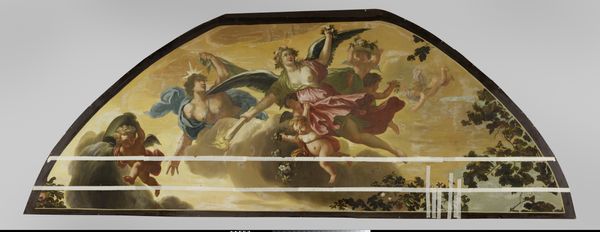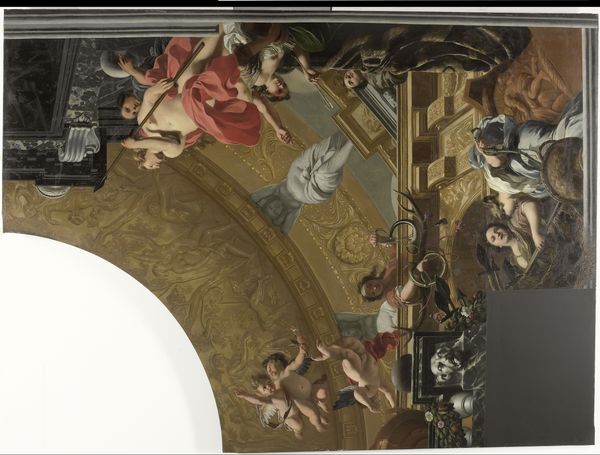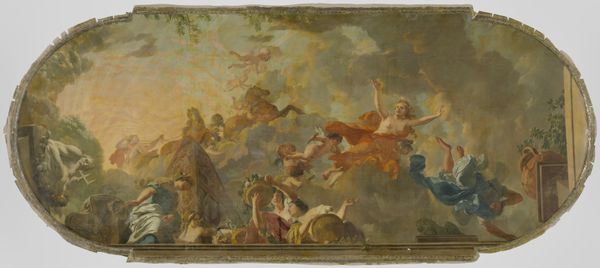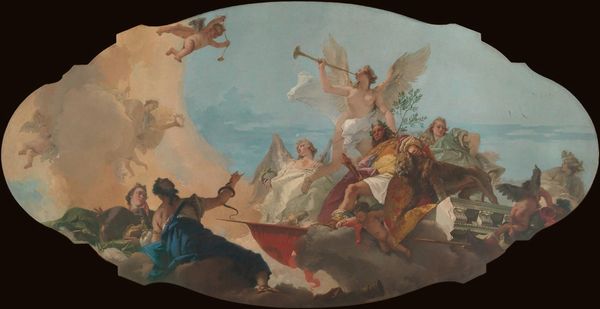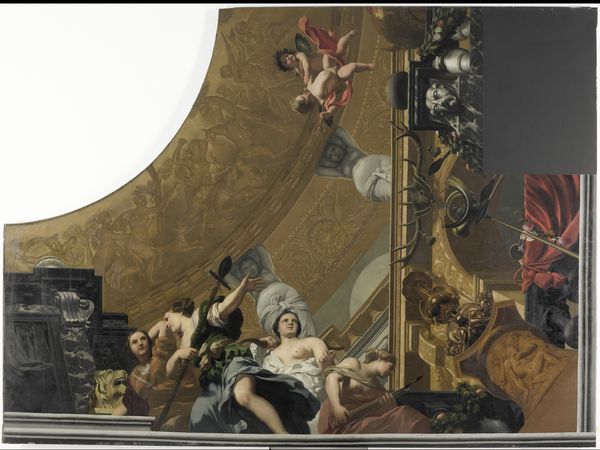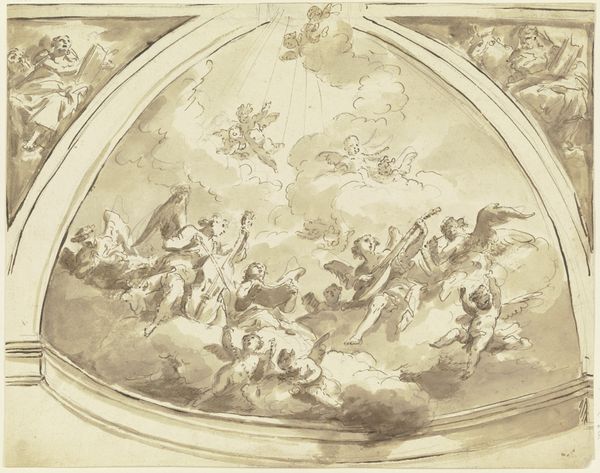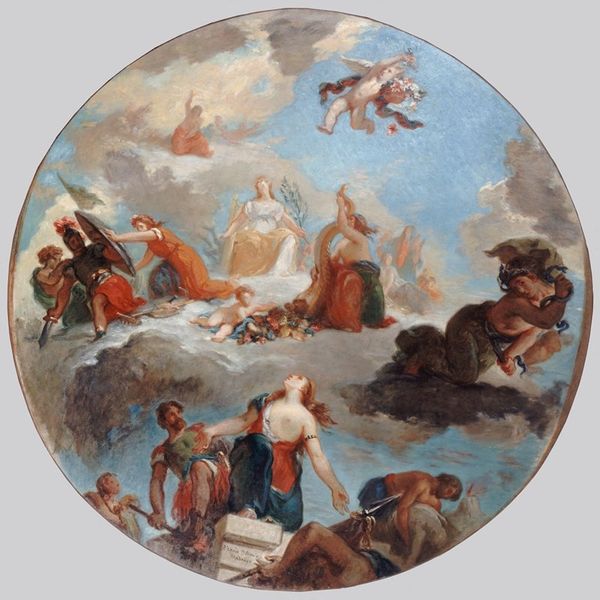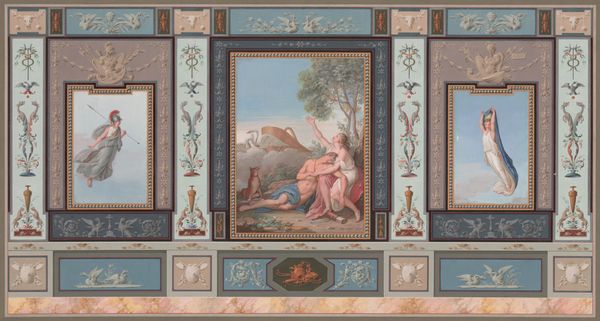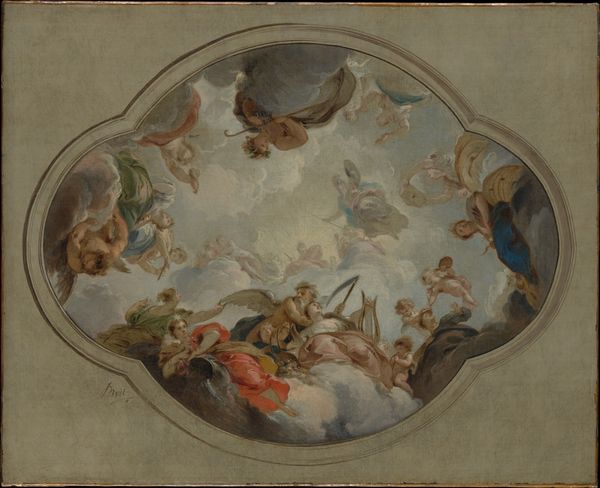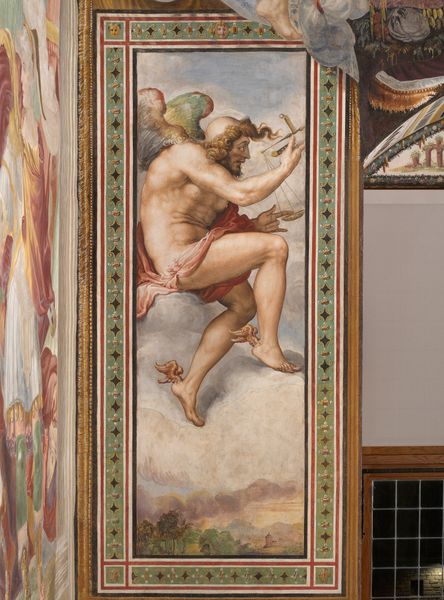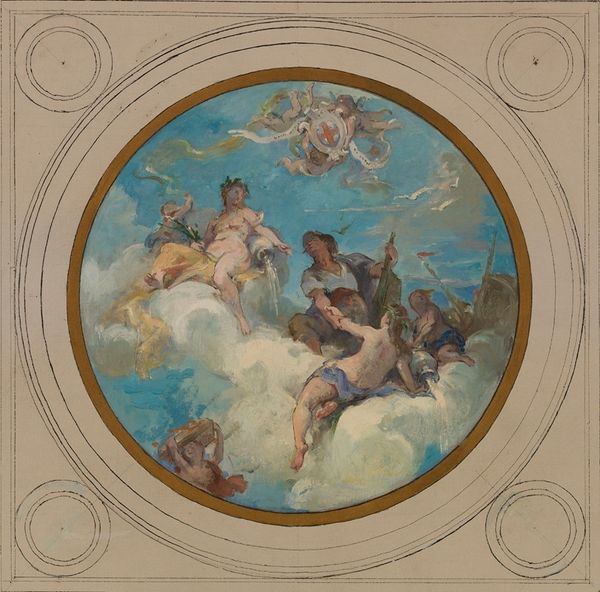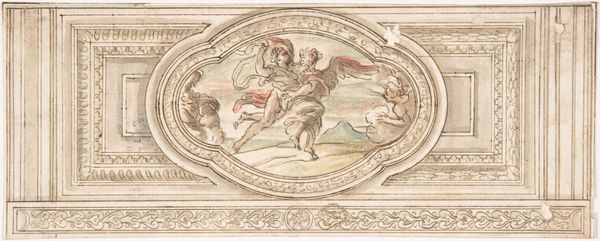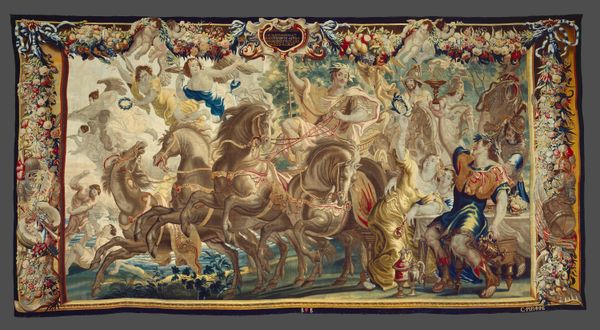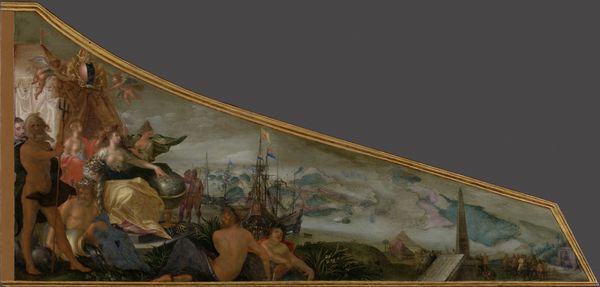
Plafondschildering met allegorische voorstelling van de Ochtend c. 1666 - 1695
0:00
0:00
painting, oil-paint, mural
#
allegory
#
baroque
#
painting
#
oil-paint
#
oil painting
#
history-painting
#
mural
Dimensions: height 206 cm, width 513 cm, depth 19 cm
Copyright: Rijks Museum: Open Domain
Editor: Here we have "Plafondschildering met allegorische voorstelling van de Ochtend," or "Ceiling Painting with an Allegorical Representation of the Morning," an oil on mural painting by Theodoor van der Schuer, dating from around 1666 to 1695. I'm immediately struck by the upward movement and light-filled palette; it feels very optimistic. What do you see in this piece? Curator: It's fascinating how these ceiling paintings functioned within the aristocratic spaces of the late 17th century. The baroque style wasn’t just about aesthetics; it was deeply entwined with power. Consider where this would have been viewed – likely from below, creating a sense of awe and emphasizing the patron’s connection to grand narratives and allegorical figures. Does knowing it’s a ceiling painting change how you perceive it? Editor: Absolutely! I hadn't fully grasped the power dynamic at play. Knowing it was designed to be viewed from below shifts everything. The figures appear more imposing, more…divine, almost. How do you think the social climate influenced the production and reception of this type of art? Curator: In the late 17th century, art was a powerful tool for self-fashioning. Aristocrats used these grand displays to assert their status and legitimacy. This particular work, with its allegorical representation of the morning, speaks to ideas of renewal, enlightenment, and progress, all virtues associated with good governance. Do you see how this imagery would have resonated with the elite class? Editor: Yes, I see that now. The light breaking through, the figures ascending – it's all incredibly aspirational, perfect for projecting an image of prosperity and enlightenment. I guess I had just viewed it through a modern lens and wasn’t considering how ingrained art was with political messaging then. Curator: Precisely! By understanding the social and political context, we can move beyond a purely aesthetic appreciation and grasp the profound ways in which art served as a vehicle for power and ideology. It definitely gives us something more to think about. Editor: This really changed my perspective. It is so fascinating to dive into how artworks functioned socially!
Comments
No comments
Be the first to comment and join the conversation on the ultimate creative platform.
